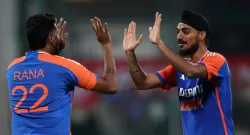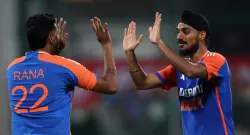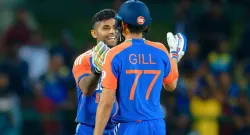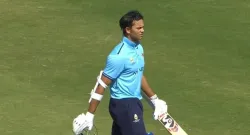
Credits: BCCI/X
The third game of the Border Gavaskar Trophy 2024-25 between Australia and India has reached an interesting stage, where the Indian team are struggling hard to reach the shore. After having the top-order crumbling down to the Aussie pace attack, India are trying their best to build up a good partnership, aiming to score at least 246 runs in order to avoid a follow-on being enforced on them by the Pat Cummins-led side. However, Australia wouldn’t mind enforcing the follow-on on Team India in search of a result in the ongoing third Test at The Gabba.
Notably, batting first, Australia scored a mammoth total of 445 in the first innings, with Steve Smith and Travis Head scoring 101 and 152 runs, respectively. In their chase, team India displayed a poor show as they lost four wickets for just 51 runs by the end of the third day. While the weather has been continuously playing a spoilsport, Australia can enforce follow-on the Indian team, if required.
What are follow-on rules? What is India’s follow-on mark?
A follow-on is an extremely rare case in current Test cricket scenario, as bowlers are required to bowl in back-to-back innings. While captains do not prefer enforcing a follow-on, Australia would not mind enforcing the same as it would allow them to finish the match early and avoid the risk of settling for a draw due to rain. Notably, the follow-on mark for India is 246. As of writing, India were batting at 201 runs and 45 runs behind the follow-on mark.
It is to be noted that the follow-on tactic is used in long-term format, where each team typically bats twice. It can only be enforced after three innings have been completed. It allows a team to force the opposition to bat again immediately after their first innings. Notably, the decision to enforce a follow-on is made by the captain that bats first. As per the Law 14.2 of the Laws of Cricket, the captain must notify the opposing them and the umpires of the decision, and once it is made, it cannot be changed.
The minimum lead required to enforce the follow-on depends on the match’s length. For the five-day Tests, a team needs a 200-run lead. On the other hand, in tournaments like Ranji Trophy, the requirement is 150 runs. In shorter formats, a lead of 100 runs is needed for two-days games and for 75 for one-day matches.




